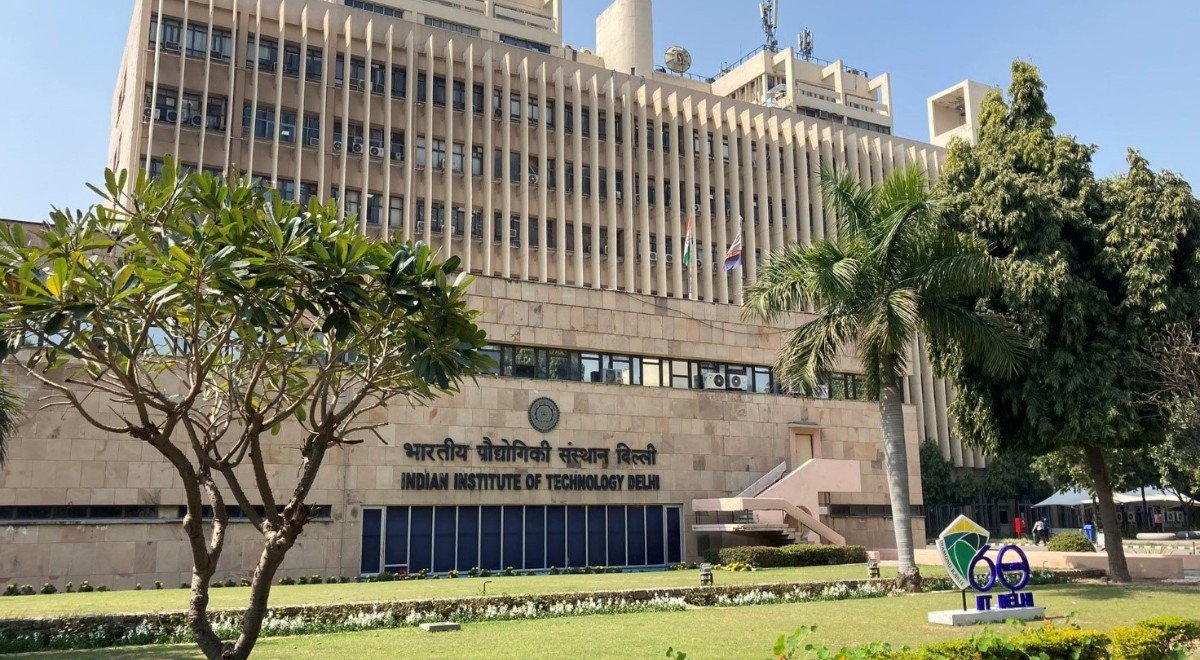Table of Contents
GMAT Exam Pattern
Those who are interested in learning the Pattern of the GMAT Exam should be aware that the GMAT is divided into four portions. The Graduate Management Admission Test, also known as the GMAT, is a computerised adaptive test that lasts for a total of three hours and thirty minutes. The Graduate Management Admission Council (GMAC), which is the official authority in charge of administering the exam, is the one that makes the decisions about the GMAT Exam Structure. Both objective and subjective types of questions are included in the GMAT 2023 Pattern.
The Analytical Writing Assessment, Integrated Reasoning, Quantitative Reasoning, and Verbal Reasoning are the four sub-sections that make up the total of 80 questions on the GMAT. In addition, contestants are allotted a certain amount of time to finish each component of the examination.
A Brief Overview of the GMAT Exam Format
An aspirant must first become familiar with the GMAT exam pattern before beginning preparations for the GMAT exam. With this information, one can construct ways to improve their score.
Analysis of Argument (Aalytic Writing Assessment), Quantitative Aptitude, Verbal Reasoning, and Integrated Reasoning are the four primary portions that make up the GMAT exam question paper.
The total time allotted for the GMAT exam is 3 hours and 30 minutes (including the time allotted for breaks), but since the GMAT online exam pattern has been changed and analytical writing will no longer be included in the test, the total time allotted for the exam has been cut in half to 2 hours and 45 minutes (including breaks). This change was made in order to accommodate time constraints. Students can practice for the real thing by practicing with simulated tests to become familiar with the format.
A Clock That Is Already Built In The GMAT Test
There is a clock that is already built into the test, and it cannot be stopped nor can it be reset.
Calculator Displayed on Screen
At the time of the examination, candidates have the option of using a calculator that is displayed on the screen in the form of a test window in order to solve quantitative problems and perform minute calculations.
Question Pattern
Because the GMAT is a computer-adaptive test, the difficulty level of each question is determined by the candidate’s response to the question immediately prior to it in the test. On the GMAT, there is no provision for scoring students lower points for incorrect answers.
When a candidate on the GMAT exam provides an accurate response to a question, the algorithm that is employed in the test causes the subsequent questions to become progressively more difficult. In the same vein, the difficulty of the following question is lowered if a candidate gives an inaccurate response to a question.
Candidates are not evaluated based on the sheer number of questions they got right during the GMAT examination; rather, they are evaluated based on the amount of difficulty they confront while taking the exam.
GMAT Exam Pattern
The GMAT exam can be finished in less than three hours and thirty minutes, including two break periods that are optional. The GMAT is administered via a computer-based method and uses English as its medium. The GMAT has a scoring range that goes from 200 to 800 possible points. When compared to other candidates, a score of 760 or more indicates that the individual is in the 99th percentile. There is a time limit associated with each component of the GMAT, and this time limit changes from section to section. Aside from this, candidates are able to take control of their test-taking experience and are given the opportunity to select one of three possible combinations about the sequence in which they will attempt the test.
As both the Integrated Reasoning and Verbal Reasoning sections of the test are computer adaptive, you will not be able to go on to the next question without first answering the current one. In addition, you will not be able to return to the previous question, and any answers that have already been selected cannot be altered. Both the Verbal Reasoning and the Quantitative Reasoning portions feature questions with multiple answer choices (MCQs).
The following is a format for the GMAT:
| Exam Section | No. of questions/ Time limit | Question Type | Score Range |
|---|---|---|---|
| Analytical Writing Assessment | 1 Topic (30 minutes) | Analysis of an Argument | 0-6 (0.5-point increments) |
| Integrated Reasoning | 12 questions (30 minutes) | Multi-Source Reasoning, Graphics Interpretation, Two-Part Analysis, Table Analysis | 1-8 (1-point increments) |
| Quantitative | 31 questions (62 minutes) | Data Sufficiency, Problem Solving | 6-51 (1-point increments) |
| Verbal | 36 questions (65 minutes) | Reading Comprehension, Critical Reasoning, Sentence Correction | 6-51 (1-point increments) |
| Total | 80 questions (3 hours 7 minutes) | 200 – 800 |
During the course of the examination, a candidate has the opportunity to take two “8-minute breaks.”
We have already gone over the GMAT Paper Pattern, which consists of the four different portions that make up the GMAT format. The format of the GMAT exam was devised so that it could accurately assess particular candidates’ skill sets.
Evaluation of Your Analytical Writing
In this portion, the candidate’s capacity for critical thinking and the ability to articulate their thoughts are evaluated. It is expected of the candidate to conduct an analysis of the provided argument and to compose a critique of it. The subjects covered are typical of interest to a wide audience. The candidate’s capacity to organize his or her thoughts and make use of the evidence provided to support their opinion is evaluated in this phase of the test.
Integrated Reasoning
Candidates are required to analyze and evaluate information that is provided in a variety of ways throughout this part. Your numerical and verbal capabilities will be put to the test by the questions contained in this part.
Multiple-source reasoning: in these questions, you will be asked to compare, interpret, or apply the information that is presented in tables, graphs, diagrams, written passages, and other sorts of visual representations.
Analysis of tables: in these questions, a candidate is tasked with extracting various statistics, ratios, probabilities, and proportions from a provided table that resembles an Excel spreadsheet.
Graphics interpretation: there will be questions of the “fill in the blanks” variety to be answered based on the line graphs, bar graphs, and bubble graphs that are provided to you.
Two-part analysis: in these questions, the candidate is tasked with determining trade-offs, calculating proportions, and the like, and selecting responses that will be presented in a tabular fashion.
Quantitative Reasoning
It evaluates applicants based on their ability to evaluate information and draw logical inferences from those evaluations.
Algebra: inequalities, equations, functions, exponents, and absolute value
Circles, lines, angles, solids, coordinate geometry, and polygons are all aspects of geometry.
The mathematical concepts of ratio and proportion, fractions, decimals, percentages, discrete probability counting systems, and sets are referred to as arithmetic.
Challenges with time and labor, rates, simple and compound interest, discounts, profit and loss, data interpretation, measurement problems, and queries about geometry are examples of word problems.
Verbal Reasoning
This component tests the candidates’ comprehension of the written material, as well as their ability to analyze the arguments presented and repair any errors in the written material so that it conforms to standard English.
Reading comprehension: in these questions, you will be asked to refer to a passage that is up to 350 words long and answer questions based on the passage’s context, style, tone, and more.
Reasoning critically is tested by these questions, which examine a candidate’s ability to evaluate arguments and formulate and assess plans of action.
Correcting the sentence: These inquiries can be broken down into the following categories: agreement, grammatical construction, logical predication, parallelism, idiom, and verb form.
The GMAT is an adaptive computer-based test.
Following our discussion of the GMAT exam structure, we will move on to describe the computer-adaptive nature of the GMAT exam. Computerized adaptive testing is utilized in two of the four components that make up the GMAT exam. These sections are the Verbal Reasoning and Quantitative sections. It indicates that the level of difficulty of the test will change based on the capability of the person taking the test. Because of this feature, the test is able to make a completely accurate evaluation of the candidate’s skills. Because of this, business schools put a lot of weight on the results that applicants receive on the GMAT when deciding whether or not to admit them.
The first question that appears in either the quantitative or the verbal section of the exam is of a difficulty level that falls somewhere in the middle. The computer will score the answers as the test taker moves along with the exam, and it will use both those scores and your responses to determine how to proceed with the test. If your initial response is incorrect, the following question will be easier than the one you just answered. If you give the proper response to the second question, then the following question will be more difficult. The candidate’s skills in the relevant area are accurately evaluated throughout the entirety of this process, which continues until its conclusion.
The participants in the test are not permitted to go back and revise their responses since the computer will utilise their choices to determine which question comes next. Because of this, it is essential to give answers carefully because you will not be able to modify them in the future.
The Order of the GMAT Sections
Students have the ability to personalize their GMAT exam experience thanks to a feature called Select Section Order, which was launched by GMAC in July 2017. This feature gives students the opportunity to choose the section order that they want to use when taking the exam. This means that you have control over the experience of taking the test.
Candidates are now given the choice to select one of the following three options for the section order of the exam:
Assessments of Analytical Writing, Integrated Reasoning, Quantitative, and Verbal Competence
Assessments in Verbal, Quantitative, and Integrated Reasoning, as well as Analytical Writing
Assessments in Quantitative and Verbal Components, Integrated Reasoning, and Analytical Writing
Candidates now have the option to take the GMAT Exam in whichever format best suits their needs, giving them more flexibility. Participants in the GMAT exam are given the option to arrange the sections in whatever order they see fit according to the structure of the test.
GMAT Section Order
| Order 1 | Order 2 | Order 3 |
|---|---|---|
| Analytical Writing Assessment | Verbal Reasoning | Quantitative Reasoning |
| Integrated Reasoning | ||
| 8-min break (optional) | ||
| Quantitative Reasoning | Quantitative Reasoning | Verbal Reasoning |
| 8-min break (optional) | ||
| Verbal Reasoning | Integrated Reasoning | Integrated Reasoning |
| Analytical Writing Assessment | Analytical Writing Assessment |
The Scoring of the GMAT Exam
Scores on the GMAT can range anywhere from 200 to 800, with most students falling somewhere in the middle. This score takes into account a candidate’s performance across all four components taken together.
The GMAT algorithm evaluates the candidate’s performance in two distinct portions: the Analytical Writing Assessment and the Integrated Reasoning sections.
The Verbal and Quantitative sections of the GMAT each have a score range of 0 to 60.
The verbal section of the GMAT can range anywhere from 9 to 45 points, and the quantitative section can range anywhere from 7 to 50 points.
It is not possible to compare the scores for the verbal and quantitative portions of the exam.
The GMAT is a computer-adaptive test, which implies that if a candidate answers a question right, the subsequent question will be more difficult than the past one, and vice versa for a candidate who answers incorrectly on the previous question.
The difficulty level of the GMAT exam, the amount of time spent on each section of the GMAT exam, and the number of correct answers a candidate receives determine where that applicant falls in the rankings.
If a candidate responds to numerous questions in a succession with an inaccurate response, then there is a significant risk that his or her GMAT score will decrease.
The GMAT scores are determined by an intricate algorithm that has been patented, but nobody is aware of its inner workings.
Your score on the GMAT will also drop significantly with each question that you leave unanswered.
Officially, there are very few options allowed for the layout of the GMAT exam. When taking the GMAT, an applicant has the option of rearranging the sequence in which the portions are presented.
Verbal Comprehension, Integrated Reasoning, Quantitative Aptitude, and the Analytics Writing Assessment (Original order).
Assessments in Verbal Comprehension, Quantitative Aptitude, Integrated Reasoning, and Analytical Writing
Important GMAT Exam Points to Remember for 2023
In order for students to gain credit, they must provide correct responses to each component of a single question.
There will be no provision for candidates to receive partial credit.
Candidates are required to submit solutions to all components of the question before moving on to the next screen with additional questions.
It is not possible to use an answer option from one question in the solution of another question.
Candidates need to keep in mind that the goal of the GMAT exam is to forecast how well students will do in graduate business schools. This is an important consideration for candidates.
Read more
- Exam Date
- Eligibility Criteria
- Application Form
- Admit card
- Exam Centers
- Exam pattern
- Syllabus
- Result
- Counselling
- Book
- Cutoff
- Mock Test
- Preparation
Frequently Asked Questions About GMAT 2023 Exam Pattern:
Q. Is there a difference between the format of the traditional GMAT and the online GMAT exam?
Ans. You’ve come to the right place because the structure of the GMAT and the GMAT online exam is exactly the same.
Q. Are Calculators permitted to be used during the GMAT exam?
Ans. During the integrated portion of the test, candidates are not permitted to bring their own calculators; instead, they will be given calculators that have the fundamental operations available.
Q. What are all of the topics covered on the GMAT 2023 syllabus?
Ans. The Quantitative, Verbal, Analytical Writing Assessment, and Integrated Reasoning portions of the GMAT exam are all on the test’s curriculum. The participants’ capacities for analytical thinking and problem-solving are evaluated in this section.
Q. When will the Analytical Writing component of the GMAT be made available to students taking the test online?
Ans. On April 8th, 2022, a new section of the GMAT online exam called the Analytical Writing evaluation section was introduced.
The number of times a candidate is permitted to take the GMAT online exam:
The Graduate Management Admission Council (GMAC) has announced that beginning September 223, 2020, students will be able to take the GMAT online exam twice within a rolling period of one year. Additionally, the lifetime restriction cap will not be applied to any online GMAT exams that were taken before to September 23, 2020.
Q. What are the fees associated with rescheduling the online version of the GMAT?
Ans. The cost to reschedule your online GMAT exam is $25 in United States dollars.
Q. What does the cancellation fee for the GMAT online exam look like?
Ans. The cancellation fee for the online version of the GMAT is $100 USD.
Q. Who can take the GMAT online test and do it legally?
Ans. The GMAT online exam can be taken by anyone who is qualified to take the in-person version of the examination.
Q. Are there going to be any changes to the format of the GMAT exam in 2023?
Ans. . The format of the examination for the GMAT 2023 will be exactly the same as the format of the examination for the GMAT 2020.
Q. When taking the GMAT, are there any opportunities to receive a penalty?
Ans. No, the GMAT exam does not use a penalty system for scoring incorrect answers.























